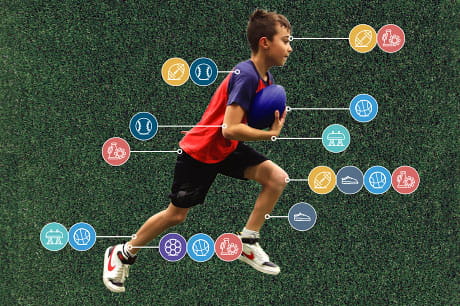What can orthotics help with?
Find foot support for an active life.
Podiatrists agree: Caring for your feet can help you stay active. And pain or discomfort hinders your movement and quality of life. Luckily, you can treat foot pain with custom orthotics, or specially designed devices that provide added cushion, comfort and support in your shoes.
Think you might need orthotics? Here’s what you need to know.
What are orthotics?
Orthotics are inserts you put in your shoes to treat various foot conditions and help relieve heel, foot and ankle pain. If you’ve ever worn a heel insert from a pharmacy or sporting goods store, you’ve used an orthotic device.
“There are many types of orthotics,” says Daniel Jackson, a certified prosthetist-orthotist at Geisinger. “They vary in material and function depending on what they’re used for. In general, they are custom-made and designed to treat specific conditions.”
How orthotics can help you
Orthotics support, protect and cushion areas of your feet causing you pain or discomfort. For example, if your ankles roll slightly inward or outward (called overpronation), your doctor might give you an orthotic insert to support your arch and prevent pronation.
Orthotic devices are used to:
- Prevent or correct foot deformities, especially in children
- Align and support feet and ankles
- Improve foot and ankle functioning
Athletes, especially runners, can benefit from orthotics.
“Doctors may prescribe orthotics alongside treatments like physical therapy to help treat the source of pain and prevent further injury,” says Jackson. “They can provide custom braces and orthotic shoes for people of all ages.”
You can try orthotics to help treat conditions including:
- Arthritis
- Bunions
- Corns and calluses
- Diabetic foot conditions
- Forefoot pain
- Fractures
- Heel spurs
- Knee pain, including runner’s knee
- Plantar fasciitis (heel pain)
- Sprains and strains
- Spine conditions
- Pediatric neurological conditions
- Torn ligaments and tendons
Store-bought vs. custom orthotics
Are over-the-counter shoe inserts as effective as custom-made ones? The short answer is that depends on what your needs are and how they fit.
Orthotic devices such as wedges, inserts, cushions and braces are available at stores. Because these over-the-counter inserts follow more of a one-size-fits-all approach, you need to make sure they’re the right fit for your foot and shoe. Store-bought inserts could be a good option if custom orthotics are not covered by your insurance. Talk to your primary care physician or someone who specializes in foot care to see if a non-custom option is right for you.
Here are the primary differences between store-bought and custom:
How they’re made — Design is everything. With custom orthotics, a podiatrist takes a complete evaluation of your legs, ankles and feet, and even how you walk. They are specifically designed to support your feet. Because store-bought inserts don’t take into account your specific foot size, shape and movement patterns, they could make existing problems worse or cause painful symptoms. The podiatrist will refer you to an orthotist, who will take a scan and measurements and create a cast, depending on your needs.
What they’re made with — Store-bought orthotics are usually made with low-cost materials, which keeps them affordable. And because they’re designed for the short term, you’ll need to replace them more often. Custom inserts last longer because they’re made from higher-quality and more durable materials.
Getting started with custom orthotics
If you think you need orthotics, start by talking with your primary care doctor. They may refer you to a podiatrist. This foot care specialist will assess your overall health, look at how you walk and create a custom treatment plan with doctors in other specialty areas, which may include a visit to an orthotist, to make sure you get the care you need.
“At Geisinger, our orthotic specialists work closely with a sports medicine team to provide specialized braces, slings, casts and orthotic inserts to manage conditions and help injuries heal,” says Jackson. “They also work closely with primary care doctors as well as orthopaedic, podiatry and physical therapy teams to help you get the best fit.”
If you’re having foot pain, orthotics may be the answer. All you need to do is take the first step.
Next steps:
Make a primary care appointment
Learn more about foot and ankle pain
Learn about orthopaedic care at Geisinger





